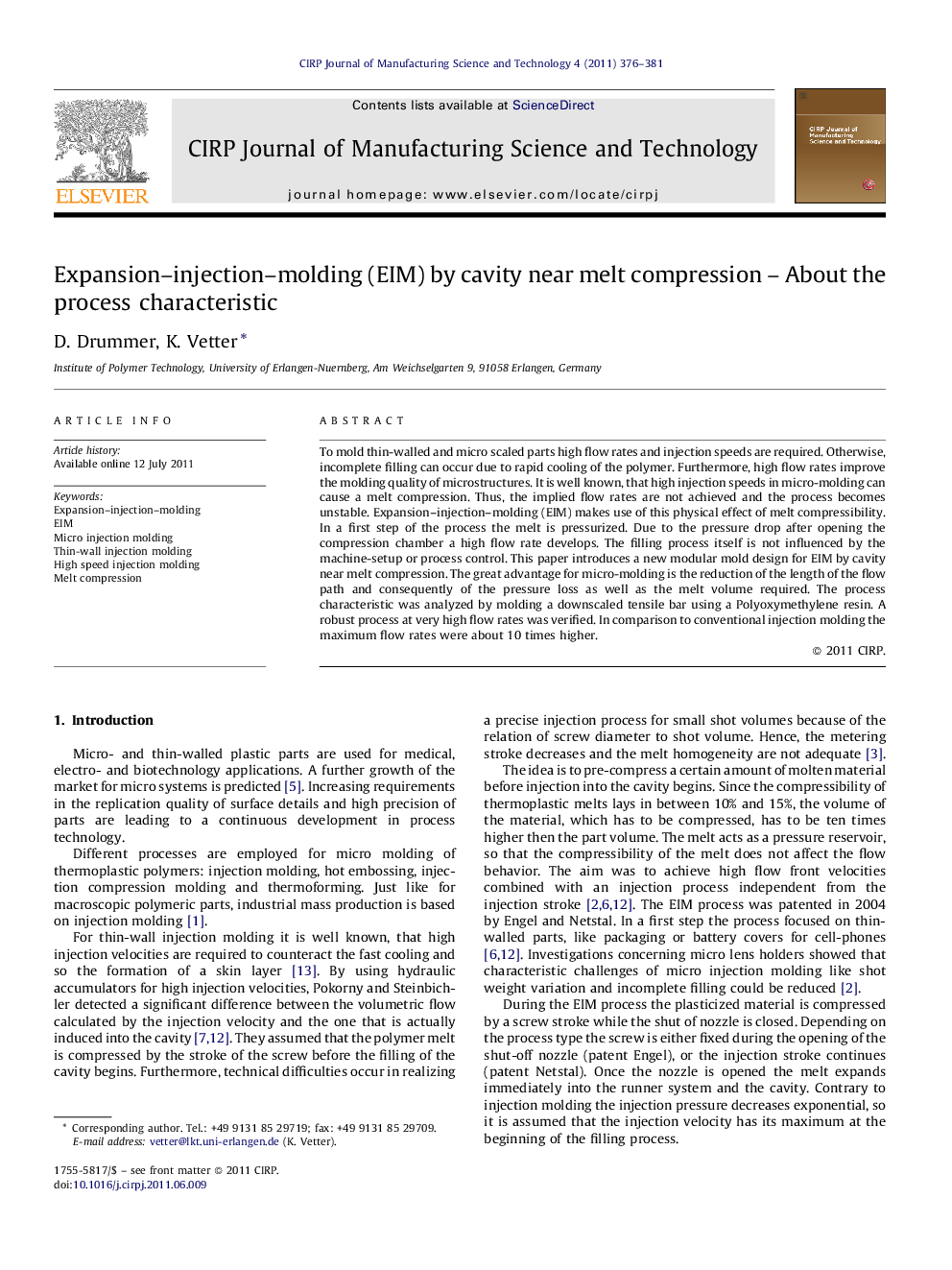| Article ID | Journal | Published Year | Pages | File Type |
|---|---|---|---|---|
| 1680149 | CIRP Journal of Manufacturing Science and Technology | 2011 | 6 Pages |
To mold thin-walled and micro scaled parts high flow rates and injection speeds are required. Otherwise, incomplete filling can occur due to rapid cooling of the polymer. Furthermore, high flow rates improve the molding quality of microstructures. It is well known, that high injection speeds in micro-molding can cause a melt compression. Thus, the implied flow rates are not achieved and the process becomes unstable. Expansion–injection–molding (EIM) makes use of this physical effect of melt compressibility. In a first step of the process the melt is pressurized. Due to the pressure drop after opening the compression chamber a high flow rate develops. The filling process itself is not influenced by the machine-setup or process control. This paper introduces a new modular mold design for EIM by cavity near melt compression. The great advantage for micro-molding is the reduction of the length of the flow path and consequently of the pressure loss as well as the melt volume required. The process characteristic was analyzed by molding a downscaled tensile bar using a Polyoxymethylene resin. A robust process at very high flow rates was verified. In comparison to conventional injection molding the maximum flow rates were about 10 times higher.
